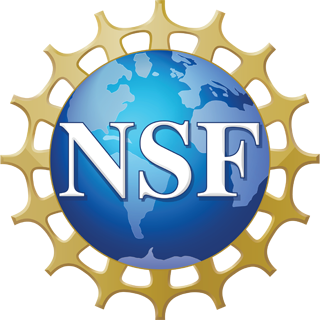| NSF Org: |
DUE Division Of Undergraduate Education |
| Recipient: |
|
| Initial Amendment Date: | July 6, 2006 |
| Latest Amendment Date: | July 6, 2006 |
| Award Number: | 0536287 |
| Award Instrument: | Standard Grant |
| Program Manager: |
Duncan E. McBride
DUE Division Of Undergraduate Education EDU Directorate for STEM Education |
| Start Date: | July 15, 2006 |
| End Date: | June 30, 2008 (Estimated) |
| Total Intended Award Amount: | $72,950.00 |
| Total Awarded Amount to Date: | $72,950.00 |
| Funds Obligated to Date: |
|
| History of Investigator: |
|
| Recipient Sponsored Research Office: |
438 ACADEMY ST BOONE NC US 28608-0001 (828)262-7459 |
| Sponsor Congressional District: |
|
| Primary Place of Performance: |
438 ACADEMY ST BOONE NC US 28608-0001 |
| Primary Place of
Performance Congressional District: |
|
| Unique Entity Identifier (UEI): |
|
| Parent UEI: |
|
| NSF Program(s): | CCLI-Type 1 (Exploratory) |
| Primary Program Source: |
|
| Program Reference Code(s): |
|
| Program Element Code(s): |
|
| Award Agency Code: | 4900 |
| Fund Agency Code: | 4900 |
| Assistance Listing Number(s): | 47.076 |
ABSTRACT
![]()
The development of personal computers, CCD imagers and more recently computer controlled, so called GoTo, telescopes has greatly expanded the types of observations, both qualitative and quantitative, that can be made by the typical undergraduate student. These powerful yet extremely user friendly devices now provide the opportunity for astronomy to match or even exceed the lab experiences in the other sciences. In addition to this newly developed hardware are many excellent astronomical image manipulation software packages that provide analytical data from these digital images.
The University's GoTo Astronomy Lab facility consists of an indoor laboratory room equipped with 18 computer stations, each operated by a team of two students. The heart of the facility is the adjacent outdoor observing deck with 18 permanently mounted 10-inch telescopes, each equipped with an STV CCD camera. Each telescope is connected to a computer station to allow image downloading, but this also permits indoor telescope and camera control when outdoor conditions are too severe to be on the deck for extended periods. The CCD cameras are interfaced to the telescope by a permanently mounted VISTA (Visual Imaging and Spectroscopic Telescope Adapter) which incorporates a flip mirror to allow direct viewing as well as imaging. It also has an integrated diffraction grating/cylindrical lens system for spectroscopy of bright stars. These user friendly telescope systems allow a wide spectrum of outdoor laboratories, some traditional, but some of which were difficult or even impossible with previously available equipment.
The intellectual merit of this project begins with the objectives to create a state-of-the-art introductory astronomical laboratory that utilizes and integrates the full potential of modern technologies, and to provide access to the educational astronomical community both the hardware designs and the laboratory materials for use in upgrading their own laboratory curricula. The facility provides 360 students per semester an opportunity to carry out investigations that seemed unrealistic until recently. Participation in these laboratories allows students to develop a deeper, first hand understanding of how scientific investigations are undertaken and how data are analyzed and evaluated.
The broader impacts of this project outside the local course fall in two different areas. The success of this project and the resultant equipment designs and lab exercises should encourage more academic institutions to develop GoTo facilities to provide their introductory students a hands (and eyes) on experience operating their own local telescopes. In addition, the outdoor exercises can be easily adapted for use with different telescope/detector combinations that other users might already have. A facility such as this can also serve local schools and the community in general when it is not in use for its primary function. It can also provide an ideal setting for workshops attended by those wishing to create or upgrade their laboratory programs.
Please report errors in award information by writing to: awardsearch@nsf.gov.



